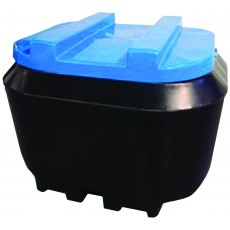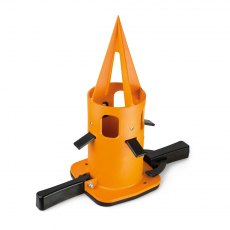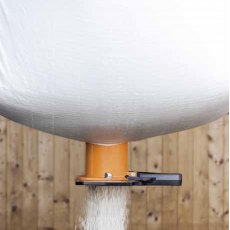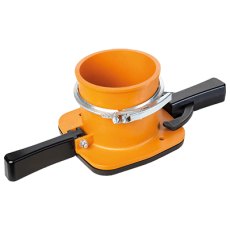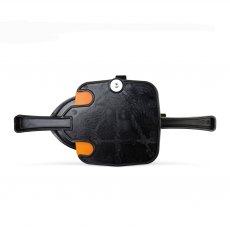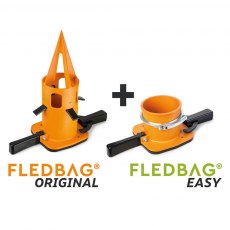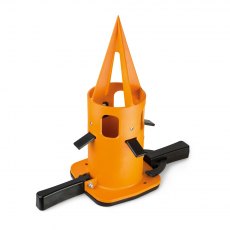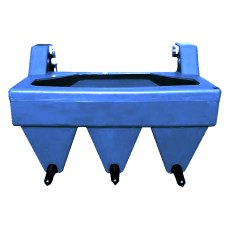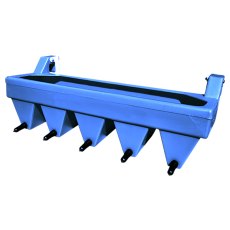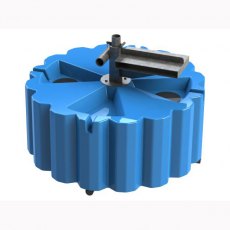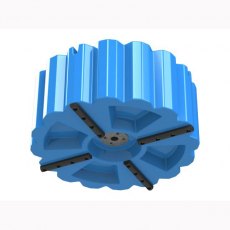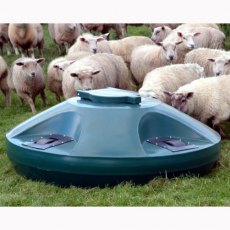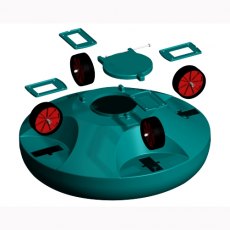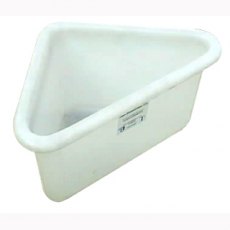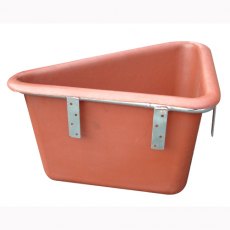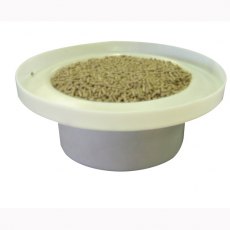Featured Products
(€414.33 inc VAT)
Livestock Feeders & Dispensers
A range of aninal feed bins for domestic and commercial uses. Manufactured using MDPE materials in Ireland. Applications and industries such as farming, small holdings, plus many more uses and applications, various shapes and sizes. 13 Litres (3 gallons) - 200 Litres (44 gallons)
It's important to note that the specific requirements for livestock feeders and drinkers can vary significantly depending on the type of livestock (cattle, sheep, goats, horses, etc.), the climate, and the particular management practices in place. It's often a good idea to consult with a livestock nutritionist or a veterinarian to ensure that your animals' nutritional needs are being met in the most effective way.
The TAMS 3 grant is available to farmers who wish to build and/or improve a specified range of farm buildings and equipment on their holding. To learn more about this grant click TAMS 3
Livestock Feeders & Dispensers FAQs
What is a milk feeder?
A compartment multi teat feeder allows calves or lambs to be allocated the correct amount of milk and reduces the effect of bullying.
To look at our range of milk feeders click Livestock Feeders & Dispensers
What types of livestock feeders are available?
There are several types, including trough feeders, bunk feeders, round bale feeders, creep feeders, and automatic feeders. The type used can depend on the animal, the feed type, and the size of the operation.
To see Tanks.ie full range of feeders click on Livestock Feeders
How do I choose the right size feeder for my livestock?
The size of the feeder should be determined by the number of animals you have, their feeding habits, and how often you want to replenish the feed. Larger operations or less frequent feedings require larger feeders.
What materials are livestock feeders made from, and which is best?
Common materials include galvanized steel, plastic, rubber, and wood. The best material often depends on durability, ease of cleaning, safety for the animals, and cost.
Many farmers find that our high-density polyethylene (HDPE) troughs offer a winning combination of durability, resistance to corrosion, and ease of maintenance. They exhibit excellent resistance to corrosion and impact and this durability ensures a longer lifespan for the trough, providing a reliable and cost-effective solution. Unlike their metal alternatives, plastic does not succumb to rust, ensuring that your livestock's water remains uncontaminated and safe. This resistance makes plastic troughs particularly well-suited for outdoor use, where exposure to the elements is inevitable.
Plastic troughs are also lightweight, facilitating easy installation, relocation, and maintenance. Their manageable weight makes them a practical choice for farmers seeking a versatile and user-friendly solution. Whether you need to move the trough to a different grazing area or during routine cleaning, the lightweight nature of plastic troughs simplifies these tasks, saving you time and effort.
Plastic is also an excellent insulator, helping to regulate water temperature. In extreme weather conditions, plastic troughs can prevent water from freezing in cold temperatures and maintain a more moderate temperature during the warmer summer months. This insulation ensures that your animals have access to water at the right temperature, promoting consistent hydration and overall health
How can I minimize feed waste with my livestock feeder?
Use feeders designed to prevent animals from pulling feed out, adjust the height for the specific animal, and provide adequate space for all animals to reduce competition and spillage.
Should I choose a portable or stationary feeder?
Portable feeders are good for rotational grazing systems and can reduce pasture damage. Stationary feeders can be more durable and may be appropriate for permanent feeding areas.
How often should water troughs be emptied?
It's crucial to establish a routine that aligns with the specific needs of your farm. Regularity is key, with a general guideline suggesting that checking and cattle drinker troughs at least once a week is a good starting point. This routine maintenance ensures that your animals have access to clean and fresh water consistently.
Consider factors such as the size of the trough, the number of animals using it, and prevailing weather conditions. High-traffic troughs or those in areas with concentrated animal activity may necessitate more frequent attention. Additionally, monitor water quality, checking for signs of algae, sediment, or debris. If present, prompt cleaning becomes imperative to maintain the health and well-being of your livestock. The frequency of emptying water troughs can also be influenced by external elements like weather. In hot conditions, troughs may require more frequent checks to prevent algae growth and guarantee an ample supply of fresh water. During freezing temperatures, monitoring and preventing ice build-up becomes essential to ensure continuous access to water.
Tailor your approach based on the unique characteristics of your farm, the size of the troughs relative to the number of animals, and any ongoing health concerns within the herd. By adopting a proactive stance and incorporating regular checks into your routine, you not only safeguard the health of your livestock but also contribute to the overall efficiency of your farm operations. Stay attentive to the condition of the water and troughs, adjusting your maintenance schedule as needed.
How do I keep my trough clean?
Maintaining a clean water trough for your livestock is crucial for their health and well-being. Aim to clean the trough at least once a week, though more frequent checks may be necessary based on factors such as the size of the trough and the number of animals.
When cleaning, empty the trough completely to remove any remaining water and debris. Use a stiff brush to scrub the interior surfaces, removing algae, sediment, and any build-up. Pay special attention to corners and hard-to-reach areas where contaminants might accumulate. Rinse thoroughly to ensure all cleaning agents and residues are removed. If the water is sourced from a pond or stream, extra care may be needed. Installing a filtration system or periodically treating the water with safe, livestock-friendly additives can help maintain water quality and reduce the frequency of thorough cleanings.
Be proactive in addressing any health concerns within the herd. If there are sick animals, increase the frequency of trough cleanings and consider disinfecting the trough to prevent the spread of diseases. By staying vigilant and implementing these practices, you'll create a clean and safe water source for your livestock, helping their overall health and vitality.
Where should a water trough be positioned?
Strategically placing your water trough is crucial for ensuring easy access and optimal health for your livestock. Position the troughs within a reasonable distance from grazing spaces, minimising the effort your animals need to expend to quench their thirst. This encourages regular hydration and contributes to their overall well-being. Consider placing the water troughs under some form of shelter, such as a canopy or natural barrier, to help prevent water contamination due to rain or excessive sunlight.
A flat and stable surface minimises the risk of tipping and allows for an even water level, making it easier for your animals to drink comfortably. Additionally, consider the drainage in the chosen area. Avoid locations prone to flooding or waterlogging, as these conditions can compromise water quality and create an unsuitable environment for your livestock.
In multi-animal setups, account for herd dynamics. Place troughs in areas that allow for simultaneous access by multiple animals, reducing competition and potential conflicts during watering times to ensure all members of the herd have equal opportunities to drink.
Regularly observe the chosen location for any signs of wear and tear or environmental changes that might impact the trough's functionality. Adjust the positioning if necessary to address emerging issues promptly. By thoughtfully selecting and maintaining the placement of water troughs, you contribute to the overall efficiency of your livestock management practices and their well-being.
How large should a water trough be?
Determining the appropriate size for your water trough is a crucial aspect of ensuring that your livestock has a reliable and ample water supply. Start by considering the number and size of animals you have on your farm and ensure there's enough room for multiple animals to drink simultaneously without causing overcrowding or competition. Larger animals, such as cattle, may require more water than smaller animals, like sheep or goats. Assess the daily water intake of your specific livestock and choose a trough size that accommodates their needs. Bear in mind that during warmer months, animals tend to drink more water to stay hydrated.
If your farm has a reliable and frequent water supply, you may lean towards smaller troughs. However, if water availability is less consistent or you're in an area prone to drought, larger troughs can provide a buffer, ensuring that your animals have access to water during drier periods.
Regularly observe the water trough during peak times, such as feeding or when animals are most active, to gauge if the current size meets the demand. Adjust the trough size accordingly if you notice signs of overcrowding or if some animals are consistently unable to access water. Striking the right balance in trough size ensures that your livestock stays well-hydrated, contributing to their overall health and productivity.

 Login
Login
